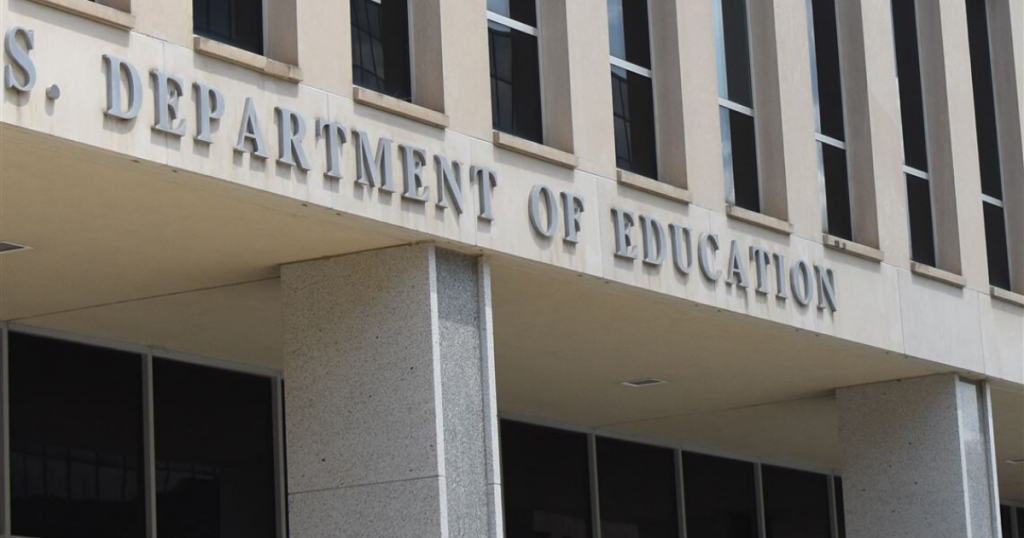How States Are Using PDG B-5 Grants to Support Financing

The BUILD Initiative, ZERO TO THREE, and Start Early, recently released a new brief highlighting the strategies states are using to improve financing in their Preschool Development Grant Birth through Five (PDG B-5) applications. This brief highlights how PDG B-5 is being used to build the capacity of early care and education (ECE) systems, create infrastructure, provide direct services, and pilot new work. Their analysis found that states are employing different pilot programs and temporary strategies that are moving the needle in their states, but more federal funding is needed to ensure that they can see this work come to fruition and support young children and their families.
PDG B-5 is a competitive federal grant designed to improve states’ ECE systems. In 2023, 21 states were awarded Planning Grants, and 21 states were awarded Renewal Grants. While the scope of work for planning grantees is to conduct comprehensive needs assessments and draft strategic plans, the renewal grantees focus on implementing their strategic plan. The 21 renewal grantees are using this infusion of federal funding across a wide range of content areas in their ECE systems, and in a variety of ways, such as by implementing compensation reforms, expanding professional development training, building the supply of child care, and streamlining administrative requirements.
In analyzing PDG B-5 grant applications, BUILD found that states have been charting their own course when it comes to ECE system development by working on a variety of projects and initiatives at once. They found that states tend to focus on shorter-term projects for their grants, perhaps because states do not see PDG B-5 as a reliable, continuous funding stream and lack confidence that state funding would be available to sustain the work. States may also be focusing on producing near-term results, or the broad framework of the grant may have led to more responsive strategies.
In their applications, PDG grantees are required to demonstrate how they plan to allocate the financial resources available across required and discretionary activity categories. This brief analyzes how states engaged in strategic financial planning and revenue growth strategies by looking at their priorities. These choices impact the overall ECE systems that grantees are building and implementing with the use of PDG funding.
This brief focuses on four aspects of financing:
- Fund distribution across key federal categories
- Fiscal analysis and planning
- New revenue streams for ECE
- Provider payment amounts and mechanisms
Within these four areas, BUILD found that states are adopting 10 finance strategies, such as mapping all financial resources, determining the true cost of care, tapping labor and workforce streams, and modifying payment processes, rates, and practices, among many others. Click here to read more about all of the strategies that states are pursuing and read on to see a few examples directly from BUILD of how states are using PDG B-5 funds to support financing strategies that are essential to improving the ECE system.
Fund Distribution Across Key Federal Categories
Among both planning and renewal grantees, the top percentage of funds was allocated to the workforce.
| Key Federal Categories | Planning Grantees | Renewal Grantees |
| Workforce | 42% expect to invest in the workforce | 30% expect to invest in the workforce |
| Parent and Family Engagement | 17% expect to invest in parent and family engagement | 23% expect to invest in parent and family engagement |
| Program Quality | 23% expect to invest in program quality | 18% expect to invest in program quality |
| Needs Assessment | 14% expect to invest in their needs assessment | 5% expect to invest in their needs assessment |
| Strategic Plan | 9% expect to invest in their strategic plan | 3% expect to invest in their strategic plan |
| Subgrants | N/A | Renewal plans permit subgrants. States elected to invest 25% of their proposed first year budget in this work. |
Fiscal Analysis and Planning
Through their PDG B-5 plans, states are tailoring their fiscal analysis and planning to focus on various aspects of the ECE system such as child care, pre-K, Part C Early Intervention, Part B 619 preschool special education, or services for a particular age group. Many states are undertaking comprehensive strategic financing plans, which may include determining the true cost of care, mapping financial investments, and conducting financial impact analyses.
- Connecticut, Delaware, Illinois, and Maine are each engaged in exploring the analysis of the cost of care. In Connecticut, the emphasis is on understanding the actual cost of child care and addressing any gaps. Delaware’s approach centers on determining the true cost of supporting early childhood professional wages for the state-funded preschool program expansion pilot. In Illinois, the focus is specifically on Part B 619 preschool special education, building on a previous PDG B-5 recommendation to enhance services by comprehending the true cost of care for preschool-age children in need of special education. Maine’s plan involves developing a cost estimate for delivering high-quality child care.
Note: Compensation-focused fiscal analysis and planning are addressed separately in the Workforce Compensation brief.
New Revenue Sources for ECE
Through PDG B-5, some states aim to establish consistent support from existing public-sector funding or with businesses to secure continuous investment in ECE services.
- Ohio has proposed developing a pilot program that involves collaborating with employers to alleviate child care expenses. This initiative proposes enhancing wages for child care workers, setting a minimum hourly rate ranging from $17 to $23. The strategy involves establishing a partnership between private or nonprofit organizations and licensed child care providers. In this arrangement, businesses would make an annual investment to ensure quality child care access for their employees. These invested resources would contribute to improving compensation, and participating businesses could also benefit from a federal tax credit. Local organizations, in coordination with Ohio’s local chambers and resource and referral agencies, would spearhead this initiative by bringing together businesses and ECE providers.
Provider Payment Amounts and Mechanisms
Child care providers receive inadequate compensation and often face barriers navigating complex fiscal and administrative requirements, as well as inefficient and burdensome payment methods. States are using PDG B-5 funds to address these challenges.
- Connecticut, North Carolina, South Carolina, and Vermont are pursuing strategies to adapt their payment procedures and rates to better support providers. Connecticut has identified options such as expediting reimbursements and providing upfront money to incentivize providers, especially those serving children who are part of the Department of Children and Families (DCF) system. North Carolina is focusing on improving rates for family child care providers, planning a pilot study to match investment with the true cost of care. South Carolina aims to expand Quality Care by Design (QCBD), which was created to increase the quality of infant and toddler care environments, by directing additional resources to providers serving infants and toddlers within the state’s 4K program. Vermont is enhancing payment processes for programs serving children with special needs, aiming for more flexibility and responsiveness, along with providing financial support directly to high-quality ECE programs through Special Accommodations Grants.
The federal government’s workforce emphasis resulted in PDG B-5 planning grantees devoting greater resources to the ECE workforce than to any other issue. BUILD concludes by suggesting that states should bring together core elements, such as fiscal mapping, cost modeling, and financial impact analysis, into a strategic finance plan that would address strategies to expand revenue to meet identified priorities, needs, and gaps.
Throughout 2023, BUILD will continue to produce briefs highlighting how states are using PDG B-5 grants, focusing on the following strategies: Career Pathways and Mixed Delivery Systems.
This is part of a larger blog series, find the rest of our PDG series here.
Subscribe to FFYF First Look
Every morning, FFYF reports on the latest child care & early learning news from across the country. Subscribe and take 5 minutes to know what's happening in early childhood education.


